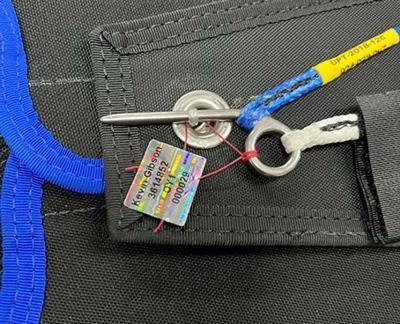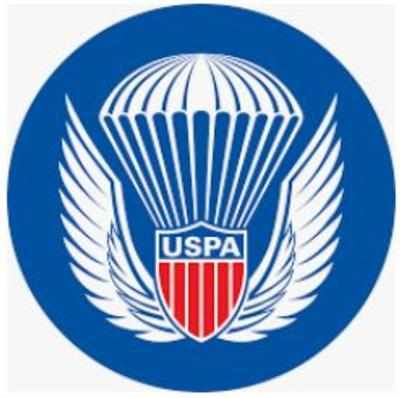Tue, Jun 18, 2024
Plastic, Mylar, and Paper Soon to be the Order of the Day in Rigging
The parachutists are getting rid of their old-school lead slugs while rigging up their chutes, now that the Parachute Industry Association has given some alternatives.

In February, the Association published Technical Bulletin TB-266, stating that they see "no impediment to immediate implementation of the use of the alternative means of sealing auxiliary or emergency parachutes explored by the Rigging Committee.” The results have been pretty nifty for those in the industry who maybe want to cut down on the amount of skin-to-lead contact in the course of their normal job. The frontrunners for replacements today? A type of pressure-sensitive paper seal, tamper-evident mylar, or a simple plastic plug. All appear to be finding fans of some sorts just as they have overseas - The EU got rid of their seals years ago, but some stateside have been hesitant to shake things up and go off-book when dealing with assiduously certified equipment. At the moment, manufacturers in the PIA Rigging Committee have expressed no reservations about updating their manuals to accommodate alternate seals, so future revisions should include the change.

Now, the USPA says riggers should be ready to see the new seas roll out, and they won't necessarily be as uniform as one may expect. In Technical Bulletin TB-266, the PIA said that lead, plastic, and paper seals are good to go provided they're equipped with the same 4.75-pound cotton break thread specified in most manufacturer instructions. The tying knot can be hidden and sealed inside using any of the methods, which should easily meet requirements in 14 CFR 65.133, since "After packing a parachute [the rigger] shall seal the pack with his seal in accordance with the manufacturer's recommendation for that type of parachute."
The USPA tapped its foreign members to figure out what's most popular, with riggers largely reporting little favor for any one particular type, aside from some plastic seals requiring more pressure than lead if using a traditional press. Custom-printed paper and seals readily available online even allow for more information than the required 3-character rigger’s seal symbol, such as the rigger’s name, certificate number, and a serial number to protect them from possible pencil packing.
More News
He Attempted To Restart The Engine Three Times. On The Third Restart Attempt, He Noticed That Flames Were Coming Out From The Right Wing Near The Fuel Cap Analysis: The pilot repor>[...]
Make Sure You NEVER Miss A New Story From Aero-News Network Do you ever feel like you never see posts from a certain person or page on Facebook or Instagram? Here’s how you c>[...]
From 2009 (YouTube Edition): Leading Air Show Performers Give Their Best Advice for Newcomers On December 6th through December 9th, the Paris Las Vegas Hotel hosted over 1,500 air >[...]
Aero Linx: NASA ASRS ASRS captures confidential reports, analyzes the resulting aviation safety data, and disseminates vital information to the aviation community. The ASRS is an i>[...]
“For our inaugural Pylon Racing Seminar in Roswell, we were thrilled to certify 60 pilots across our six closed-course pylon race classes. Not only did this year’s PRS >[...]
 NTSB Final Report: Rutan Long-EZ
NTSB Final Report: Rutan Long-EZ ANN FAQ: Turn On Post Notifications
ANN FAQ: Turn On Post Notifications Classic Aero-TV: ICAS Perspectives - Advice for New Air Show Performers
Classic Aero-TV: ICAS Perspectives - Advice for New Air Show Performers ANN's Daily Aero-Linx (06.28.25)
ANN's Daily Aero-Linx (06.28.25) Aero-News: Quote of the Day (06.28.25)
Aero-News: Quote of the Day (06.28.25)




